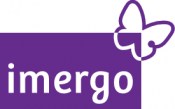Lessons on complacency and sustainable performance
Risk Principle(s): Strategic Consistency; Complacency; Overconfidence.
Key Lessons: Speed and arrogance are not substitutes for disciplined, sustained effort. Risk is mitigated through consistency and long-term thinking.

In the intricate world of risk management and governance, clarity and foresight are paramount. Yet, sometimes, the most profound insights don’t emerge from complex algorithms or lengthy reports, but from the simple, memorable narratives of our youth. These fables, passed down through generations, encapsulate timeless truths about human behaviour, strategic choices, and the subtle nuances of risk.
At Imergo, we believe in the power of storytelling to make risk concepts resonate and to embed a deeper understanding of organisational vulnerabilities. Let’s delve into a classic Aesop’s fable that offers critical lessons for today’s dynamic business environment: The Hare and the Tortoise.
The Hare and the Tortoise: Sustainable pace vs. overconfidence risk
The iconic race between the swift Hare and the steadfast Tortoise is often cited for its moral of “slow and steady wins the race.” The fable begins with the arrogant Hare challenging the slow-moving Tortoise to a race, utterly convinced of an easy victory due to its superior speed. True to its nature, the Hare dashes far ahead, then, supremely confident in its lead, decides to take a nap, believing victory is assured. The Tortoise, meanwhile, plods along, never stopping, never wavering, consistently making progress towards the goal, eventually crossing the finish line first while the Hare sleeps or is distracted. However, beneath this surface lesson lies a deeper insight into strategic consistency, the perils of overconfidence, and the critical importance of maintaining unwavering focus in risk management.
The Risk Lesson: Discipline, consistency and overcoming complacency
This fable powerfully illustrates that unbridled speed and overconfidence, without sustained discipline and a realistic assessment of the environment, can be a greater risk than a measured, consistent approach. In a business context, this translates to:
- Complacency risk: The Hare’s arrogance in its own speed and inherent advantages led directly to complacency. In business, past successes, market dominance, or a technological lead can breed a dangerous overconfidence. This often leads to a neglect of emerging threats, underinvestment in necessary innovation, or a slowdown in continuous improvement efforts. Organisations become vulnerable when they assume their lead is unassailable and stop diligently scanning the horizon for new challenges or disruptive competitors.
- Lack of strategic consistency: The Hare’s sprint-and-sleep approach starkly lacked consistency. Successful risk management, like a marathon, is not a one-off project or a reactive burst of effort during a crisis. It requires a continuous, methodical process of identification, assessment, mitigation, and monitoring – a steady, tortoise-like pace that integrates risk considerations into daily operations and long-term planning. Inconsistent application of risk frameworks, sporadic audits, or episodic attention to compliance creates gaps that can be exploited.
- Sustainable performance vs. unsustainable sprints (The “move fast and break things” trap): The Tortoise’s victory underscores that sustainable performance, even if seemingly less glamorous or exciting in the short term, ultimately yields success and resilience. Rapid, unchecked growth (the Hare’s sprint) often introduces unmanaged risks such as strained resources, burnout within teams, compromised quality, or systemic failures. This is particularly relevant to the “move fast and break things” mindset, which, while promoting agility, can inadvertently foster a culture where critical controls are bypassed, long-term stability is sacrificed for short-term gains, and the ‘breaking things’ extends beyond product iterations to fundamental business resilience. A sustainable pace allows for proper due diligence, controlled expansion, and the embedding of robust controls, ensuring long-term viability over fleeting gains.
The lesson for organisations is clear: true resilience and lasting competitive advantage come from disciplined execution, an unwavering focus on the long-term goal, and a healthy scepticism towards overconfidence, no matter how fast you think you can run. The tortoise’s consistent plodding reminds us that steady vigilance and ongoing effort are far more reliable paths to success in the race against risk.
Beyond the fairy tale: Strategic foresight in Action
The tale of “The Hare and the Tortoise” serves as a powerful reminder that sustained success in any race – be it against competitors or emerging risks – demands more than just bursts of speed. It requires strategic foresight, unwavering discipline, and a deep understanding of one’s own capabilities and vulnerabilities.
To embody the wisdom of the Tortoise and build a truly resilient organisation, leaders must:
- Cultivate continuous vigilance: Never let past successes breed complacency. Regularly challenge the status quo, conduct proactive risk scanning, and encourage open dialogue about potential blind spots and emerging threats, even when things are going well.
- Embed strategic consistency: Integrate risk management not as a separate function, but as an inherent part of daily operations and strategic planning. Foster a culture where diligent processes, regular reviews, and long-term perspectives are valued over quick fixes or sporadic efforts.
- Prioritise sustainable growth and controlled innovation: Resist the temptation for unchecked, rapid sprints that can strain resources and introduce unmanaged risks. While agility is crucial, ensure that innovation, even when fast-paced, is balanced with adequate controls, risk assessment, and a commitment to long-term stability. Avoid a “break things” approach that compromises fundamental quality, security, or ethical standards.
- Embrace humility in success: Maintain a healthy scepticism about market dominance or perceived invincibility. Acknowledge that even the swiftest can stumble if they lose focus and underestimate the power of consistent, incremental effort from others.
By internalising these lessons, organisations can ensure they are not merely fast, but truly resilient, capable of enduring the marathon of modern business and crossing the finish line consistently ahead of unseen dangers.
To find out more about how Imergo can help you in you risk management challenge contact us.
